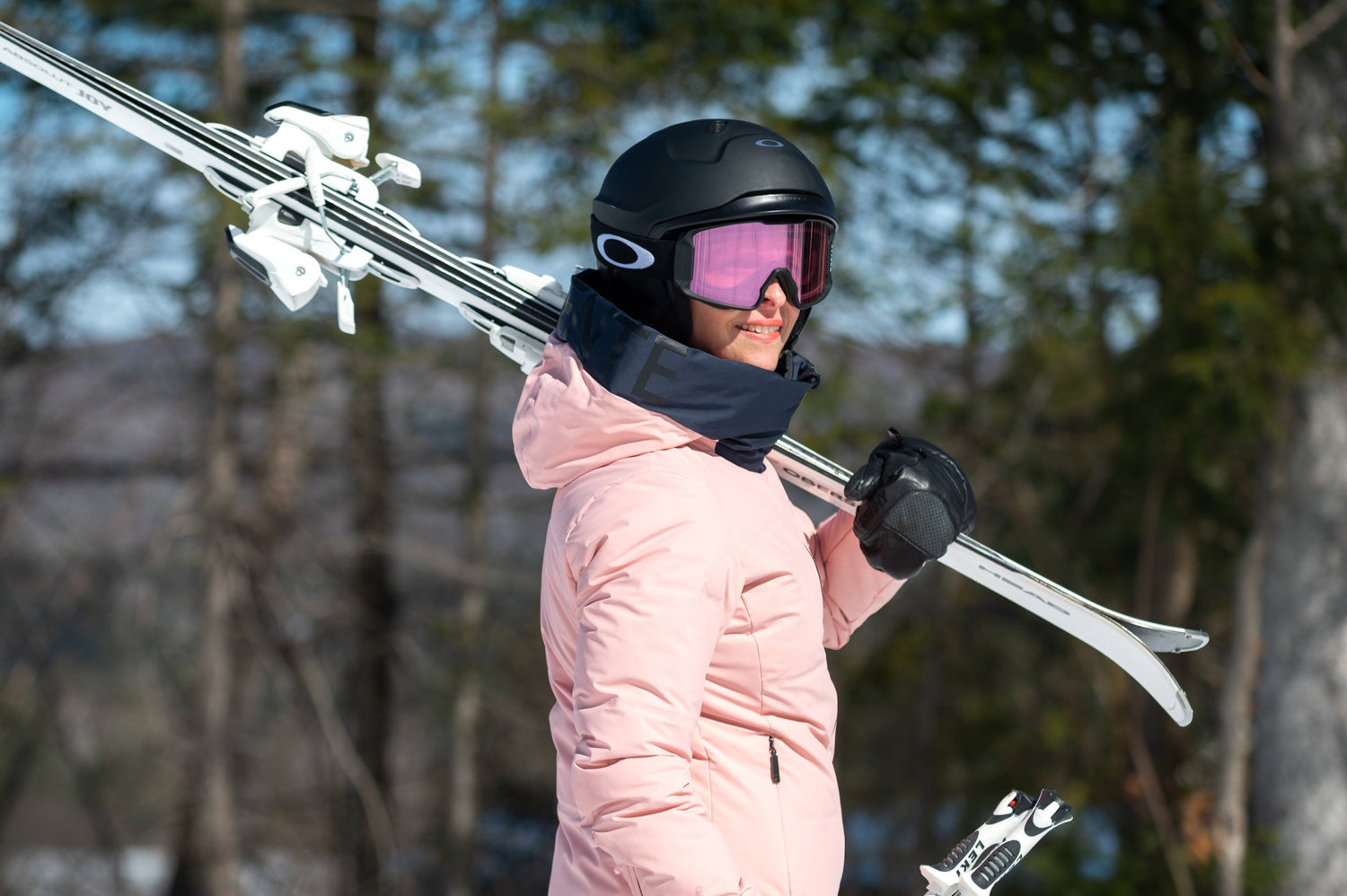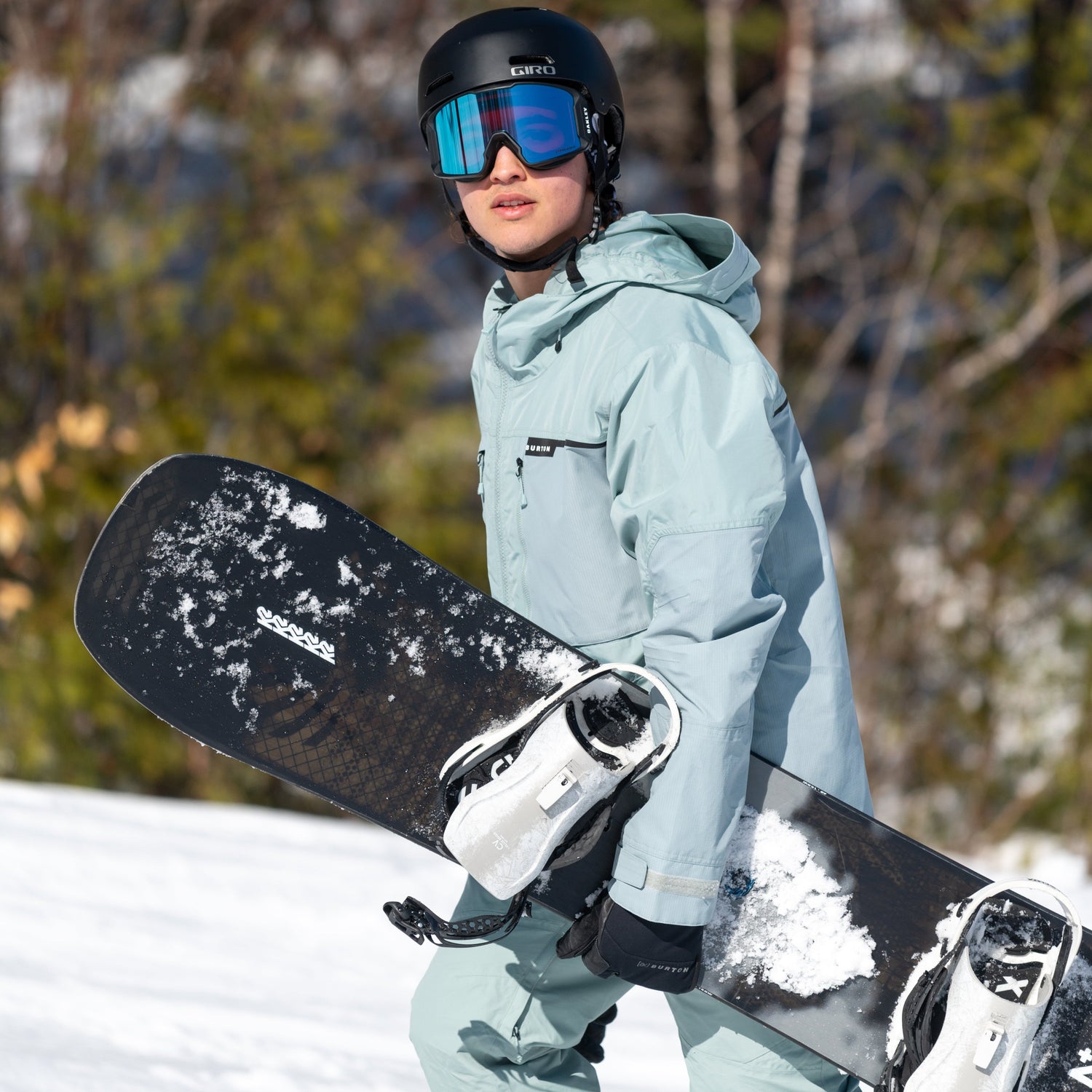Layering for Ski Touring
You’ve bought your very first touring setup this season. You’re beyond ready for a winter of adventures, cardio, and body temperature management in cold or even downright frigid weather.
Still putting together your alpine touring setup? See our advice in “How to Choose Alpine Touring Skis?”, “How to Choose Alpine Touring Boots?”, “How to Choose the Right Alpine Touring Binding?”, and “How to Choose Climbing Skins?”
For touring, you should go with a layering system. Creating an effective system by putting on a base layer, mid layers and shells is the key to successfully enjoying the sport. On the other hand, poor layer management can quickly turn touring into a rather unpleasant experience.
Layering clothing with specific technical characteristics makes for better body temperature and moisture management for both the lower and upper body. Dressing in layers lets you adapt your clothing to the weather conditions and your effort level. Adding or removing layers is a smart way to deal with how these two parameters vary throughout the day. That’s the beauty of dressing in layers.
If you want to know everything you need for alpine touring, both for backcountry skiing and splitboarding, check out our Alpine Touring Guide: Skiing and Splitboarding.

Best Ski Touring Base Layer
Worn directly against the skin, a base layer is the most important part of a functional, high-performance system. Its goal is to keep you dry. A base layer for touring should made of synthetic fibres, merino wool, or a blend of the two. Skinning uphill is a high-intensity activity, and these materials quickly wick moisture. They’re also lightweight and comfortable. Avoid coton, which absorbs moisture and stays wet. A clammy base layer is uncomfortable and can even make you dangerously cold in some situations.
Ideally, a base layer for touring is made of synthetic fibres. Skinning uphill is a high-intensity activity, and synthetic base layers quickly wick moisture and keep you dry. They’re also lightweight and comfortable.

Mid Layers for Touring
The mid layer’s mission is to retain your body heat without trapping moisture. It can be a quilted jacket made of either down or synthetic fibres. You can also have an insulated jacket, such as a fleece, or a merino wool garment in your backpack. For touring, mid layers made of synthetic insulation are preferable to those made of down because of their superior breathability.
In addition, mid layers can be worn over each other. For example, a fleece jacket can be worn under a synthetic insulation layer.
During meal breaks, transitions on exposed peaks, or long descents in cold weather, an insulated, highly compressible down jacket can sometimes be worn over your shell. You can store it in your touring backpack and put it on as needed. This overjacket allows you to quickly trap heat without having to remove your shell. It acts a bit like a blanket.
Carrying a down jacket, even on days when it doesn’t seem necessary, is a smart safety precaution. Unexpected weather changes, gear failures, or injuries can force you to stop for longer than planned. In these situations, staying warm is critical to avoiding hypothermia. A lightweight, compressible down jacket keeps you warm when you need it most. It’s always better to carry one too many layers than one too few. For extra emergency preparedness, you may also want to carry a rescue blanket.

Outer Layer: Shell Jacket and Pants
A key aspect of the layering system for both the upper and lower body, shell jackets and pants protect you against the elements. Their pressed membrane has an internal, middle and outer layer. The first is in contact with your body like a lining. It ensures your comfort. The middle layer makes the shell breathable, and the outer one is waterproof. This combination makes shells waterproof, breathable, windproof outdoor clothing. A shell is your shield against the elements.
These membranes are often described as two-layer, two-and-a-half layer, and three-layer membranes. As an outer layer for touring, the three-layer version is most used. This fabric is ultra-durable, lightweight and compressible. Although a number of brands make their own membranes, the Gore-Tex membrane remains the best known and most used for making shell jackets and pants.

Touring Accessories
In addition to your ski touring clothing, you need high-performance accessories. Opt for thin gloves for climbs and insulated mittens for descents. In especially cold weather, shell mitts can be worn over gloves for extra warmth. For your head, a thin hat or cap prevents you from overheating on ascents. However, when skiing back down, a warmer hat under your ski helmet keeps you from losing warmth. Don’t forget a thin neck warmer to avoid moisture buildup.
Boot liners should keep your feet warm, so thin synthetic or merino socks are the best choice. Thick socks can actually make you colder by restricting circulation. If your feet tend to get cold, you may need a different boot liner or heated ski socks.

The Best Ski Touring Clothing
- A synthetic or merino wool base layer (upper and lower body)
- A synthetic or merino wool mid layer (upper and lower body as needed depending on the temperature)
- A shell coat
- Shell pants
- Thin gloves for the skin track
- Insulated mittens for downhills
- A thin hat or cap for climbs
- A warm hat for descents
- A neck warmer
- Thin synthetic or merino wool socks
If you need some ideas about where to go once you’re ready to dress for success, read our article “9 Places in Quebec to Start Alpine Touring” and “7 Epic Alpine Touring Destinations in Quebec.”



